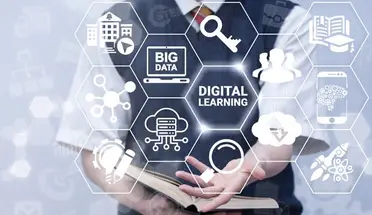The cybersecurity threat and management landscape is constantly changing. With the rise of remote workforces, cloud computing, and other Internet-based technologies, the number of potential targets for hackers has vastly expanded. As businesses continue to adopt new technologies and operating models, here are 8 cybersecurity trends you will be hearing more and more about:
-
IoT Security - It is estimated that there are 14.4 billion IoT devices in use around the world. The State of IoT 2022 report forecasted that by the year 2025, we’ll have 27 billion. With the rise in this new technology and connectivity to the Internet, the scope for threats is on the rise.
While device engineers and solution designers continuously seek new ways to secure IoT systems, organizations must continue to remain vigilant and adhere to best practices such as employee security awareness, strong passwords, dedicated wi-fi networks, encrypted wi-fi, modern firewalls, automated security patching, and other measures. Organizations will have to pay close attention to IoT system security because any weaknesses could result in a hacker disabling critical public or corporate infrastructure.
-
Ransomware Attacks - Ransomware is a constant threat. The Statista report Company Threat Outlooks predicted that ransomware attacks would be one of the top IT threats facing organizations in 2022. A simple email that looks completely genuine to an employee could trigger an extended period of chaos that compromises an organization's data and critical technology. In order to prevent these attacks, your employees need to be trained to spot these emails and security software needs to be continuously updated to identify and defend against the latest threats. This type of threat is expected to be an ongoing challenge for the foreseeable future.
-
Supply Chain Attacks - Hackers are not just targeting corporate infrastructure and data, they are trying to infiltrate the IT supply chain to create vulnerabilities in the source code of tools and technologies that are the foundation of networks and software applications.
Fifteen percent of organizations worldwide experienced Supply Chain Attacks in 2021. A recent Gartner prediction suggests that by 2025, 45% of organizations worldwide will have experienced attacks on their software supply chains. Hacks like those seen against SolarWinds, Kaseya and GitLab will only become more common.
A successful hack of a corporate network mostly impacts that one entity. A successful hack of the technology supply chain can have an exponential impact introducing vulnerabilities into technology systems used by hundreds if not thousands of organizations who use that technology. Organizations that produce software and technology broadly used across the landscape need to recognize the threat hackers pose and remain vigilant.
-
Cloud Security - With enterprises embracing Cloud computing for the many benefits it provides, the potential cost of a poorly planned cloud migration has never been higher. While leading cloud providers offer robust security, authentication, and encryption solutions, many organizations do not implement these features properly. Furthermore, improperly configured multi-tenant cloud solutions can allow hackers to access your confidential information without ever having to navigate your corporate security environment. Even seemingly secure cloud hosting solutions can be compromised by a lapse in judgment by an end user. As such, enhancing cloud security will be an ongoing priority for the foreseeable future.
-
Mobile Device Security - Mobile devices have become an indispensable part of our daily lives. Nearly two-thirds of people on earth own and use smartphones, storing many types of confidential information ranging from banking and credit card numbers to personal medical information, to passcodes for corporate multifactor authentication. Because of the information stored on them, mobile devices are an appealing target for hackers. Measures to improve the security of these devices, both from an enterprise and from a personal standpoint, will become a growing priority in the future.
-
5G Internet - 5G offers tremendous advantages in terms of enabling remote workers to quickly access network resources to improve productivity. 5G by its fundamental nature is not secure. Data packets are transmitted across shared bandwidth to eventually reach their destination. Without rigorous security and encryption, data packets could be accessed and exploited by third parties for malicious purposes.
-
Cybersecurity Mesh Architecture(CSMA) - With today’s remote and hybrid workforces, the number of security vulnerabilities organizations face has never been greater. To help manage these threats, Gartner established the concept of a cybersecurity mesh architecture (CSMA). The concept essentially involves layering complementary tools, technology, software and policies to secure every point of an enterprise’s network, both within its security perimeter, and for dispersed workers. By incorporating modern tools and techniques, CSMA empowers a zero trust approach to network and infrastructure security which enforces credentialing at every access point within an enterprise network.
-
Awareness - Cyber-attacks are often the result of human error, rather than a flaw in the digital security ecosystem. Training and ongoing awareness measures to establish and reinforce behaviors that promote cybersecurity will become increasingly common. Progressive businesses are making investments in comprehensive initiatives to alter user behavior to enhance the overall security of their enterprise systems.
Cybersecurity is more crucial than ever. It is no longer just a technology risk, it is a business risk. To learn more about how Trigyn’s cybersecurity services team can help secure your data and technology infrastructure.
For more information about Trigyn’s Infrastructure Services, Contact Us.




